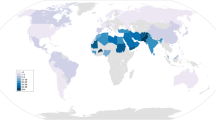Abstract
Acid hydrolases are present in normal human urine in appreciable amounts. Their source appears to be lysosomes released by kidney proximal tubule epithelial cells. For a given lysosomal enzyme the total amount excreted is the product of two parameters, a general one describing the rate of lysosome secretion and a specific one describing the relative concentration of that enzyme in lysosomes. There is considerable population variation in both parameters. Studies of β-glucuronidase, β-galactosidase, β-hexosaminidase, and α-galactosidase in monozygotic and dizygotic twins show that an appreciable part of this variation is genetic in origin. This appears to be true for both total enzyme excretion and lysosome composition. Although it was not possible to test directly whether this is also true for the rate of lysosome secretion, the fact that the two former parameters are both heritable strongly suggests that the rate of lysosome excretion is also a heritable trait. Taken together with previous data, the results suggest polygenic control of these biochemical traits. It is particularly significant that β-glucuronidase excretion in normal individuals is a heritable trait since the excretion of this enzyme has frequently been used as a measure of normal and pathological physiological changes.
Similar content being viewed by others
References
Bank, N., and Bailine, S. H. (1965). Urinary β-glucuronidase activity in patients with urinary tract infection. N. Engl. J. Med. 27270.
Begum, A. (1973). Urinary excretion of β-glucuronidase in protein-calorie malnutrition. Clin. Chim. Acta 46229.
Boyland, E., Gasson, J. E., and Williams, D. C. (1957). Enzyme activity in relation to cancer. Br. J. Cancer 11120.
Brandt, E. J., Elliott, R. W., and Swank, R. T. (1975). Defective lysosomal secretion in kidneys of Chediak-Higashi (beige) mice. J. Cell Biol. 67774.
Christian, J. C. (1979). Testing twin means and estimating genetic variance: Basic methodology for the analysis of quantitative twin data. Acta Genet. Med. Gemellol. 2835.
Christian, J. C., and Norton, J. A. (1977). A proposed test of the difference between the means of monozygotic and dizygotic twins. Acta Genet. Med. Gemellol. 2649.
Christian, J. C., Kang, K. W., and Norton, J. A., Jr. (1974). Choice of an estimate of genetic variance from twin data. Am. J. Hum. Genet. 26154.
Clark, P. J. (1956). The heritability of certain anthropometric characters as ascertained from measurements of twins. Am. J. Hum. Genet. 749.
Erickson, R. P., Sandman, R., and Epstein, C. H. (1975). Lack of relationship between blood and urine levels of glycosaminoglycans and lysosomal enzymes. Biochem. Med. 12331.
Gonick, H. C., Karmer, H. J., and Schapiro, A. E. (1973). Urinary β-glucuronidase in renal disease. Arch. Intern. Med. 13263.
Hradec, E., Petrik, R., and Pezlarova, J. (1965). The activity of β-glucuronidase in cases of bladder neoplasma. J. Urol. 94430.
Kallet, H. A., and Lapco, L. (1967). Urinary β-glucuronidase activity in urinary tract disease. J. Urol. 97352.
MacFate, R. P., Cohn, C., Eichelberger, L., and Cooper, J. (1954). Symposium on azotemia. Am. J. Clin. Pathol. 24511.
Paigen, K. (1979). Acid hydrolases as models of genetic control. Annu. Rev. Genet. 13417.
Paigen, K., and Peterson, J. (1978). Coordinacy of lysosomal enzyme excretion in human urine. J. Clin. Invest. 61751.
Plum, C. M. (1967). β-Glucuronidase activity in serum, cerebro-spinal fluid and urine in normal subjects and in neurological and mental patients. Enzymol. Biol. Clin. 897.
Roberts, A.P., Franpton, J., Karim, S. M. M., Pharm, B., and Beard, R. W. (1967). Estimation of β-glucuronidase activity in urinary tract infection. N. Engl. J. Med. 2761468.
Ronald, A. R., Silverblatt, F., Clark, H., Cutler, R. E., and Turck, M. (1971). Failure of urinary β-glucuronidase activity to localize the site of urinary tract infection. Appl. Microbiol. 21990.
Schapiro, A., Paul, W., and Gonick, H. (1968). Urinary β-glucuronidase in urologic diseases of the kidneys. J. Urol. 100146.
Swank, R. T., Novak, E., Brandt, E. J., and Skudlarek, M. (1978). Genetics of lysosomal functions. In Doyle, D., and Segal, H. (eds.), Protein Turnover and Lysosomal Function Academic Press, New York, pp. 251–271.
Tappel, A. L. (1969). Lysosomal enzymes and other components. In Dingle, J. T., and Fell, H. B., (eds.), Lysosomes in Biology and Pathology North-Holland, Amsterdam, Vol. 2, pp. 209–213.
Author information
Authors and Affiliations
Additional information
This study was supported by grants from the National Institutes of Health (GM-19521) and the Council for Tobacco Research—U.S.A., Inc. (1080). The work was done while the authors were in the Department of Molecular Biology, Roswell Park Memorial Institute, Buffalo, New York 14263.
Rights and permissions
About this article
Cite this article
Paigen, K., Peterson, J. & Ward, E. A genetic component in human lysosomal enzyme excretion. Biochem Genet 22, 517–527 (1984). https://doi.org/10.1007/BF00484520
Received:
Revised:
Issue Date:
DOI: https://doi.org/10.1007/BF00484520




